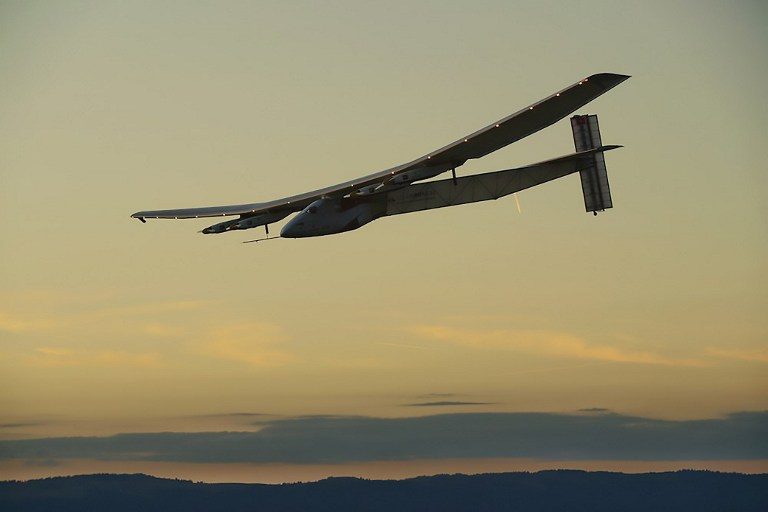SUMMARY
This is AI generated summarization, which may have errors. For context, always refer to the full article.

CAIRO, Egypt – The first solar-powered plane to circle the world took off from Cairo on Sunday, July 24, for Abu Dhabi in the final leg of its journey.
Swiss pilot Bertrand Piccard was behind the controls of Solar Impulse 2, which can fly for days on only energy from the sun.
“It’s a project for energy, for a better world,” Piccard, 58, told journalists before taking off.
The ground crew, who had dragged the plane out to the tarmac with ropes, cheered as it lifted off and disappeared into the night.
It had been scheduled to leave last week, but the flight was delayed because of winds and Picard falling ill.
Piccard and Swiss entrepreneur and pilot Andre Borschberg have taken turns flying the plane on its 35,000-kilometer trip around the world.
Borschberg piloted the flight’s 8,924 kilometer Pacific stage between Nagoya, in Japan, and Hawaii.
Solar Impulse 2 arrived in Cairo after a two-day flight from Spain, finishing the 3,745 kilometer journey with an average speed of 76.7 kilometers an hour.
It had earlier landed in Seville after completing the first solo transatlantic flight powered only by the sun.
The single-seat aircraft, no heavier than a car but with the wingspan of a Boeing 747, is fitted with 17,000 solar cells on its wings. During night-time flights it runs on battery-stored power.
It typically travels at a mere 48 kilometers per hour, although its flight speed can double when exposed to full sunlight.
‘Close to the limits’
Piccard, a psychiatrist who had made the first non-stop balloon flight around the world in 1999, said the last leg of the Solar Impulse 2 tour would be difficult.
“It’s a very, very hot region… its going to be an exhausting flight,” he said.
Borschberg told journalists that the heat would be a new challenge for the plane.
“Technically it’s close to the limits that we have set in terms of temperature, so that’s something which we did not experience before,” he said via Skype from mission control in Monaco.
“But with the temperature profile that we see over the coming days, we should be all fine.”
The plane set out on March 9, 2015 from Abu Dhabi, crossing Asia and the Pacific to reach the United States and then flying on to Spain and Egypt with the sun as its only source of power.
Prince Albert of Monaco, a patron of the project, gave the flight the go-ahead from its mission control centre in Monaco, telling Piccard “you are released to proceed.”
Borschberg and Piccard have said they want to raise awareness of renewable energy sources and technologies with their project, although they do not expect solar-powered commercial planes any time soon.
“There will be passengers very soon in electric airplanes that we will charge on the ground,” Piccard had said when the plane arrived in Cairo.
“On the ground you can charge batteries and you can have short haul flights, maybe 500 kilometers with 50 people flying in these planes” in a decade, he predicted. – Rappler.com
Add a comment
How does this make you feel?
There are no comments yet. Add your comment to start the conversation.